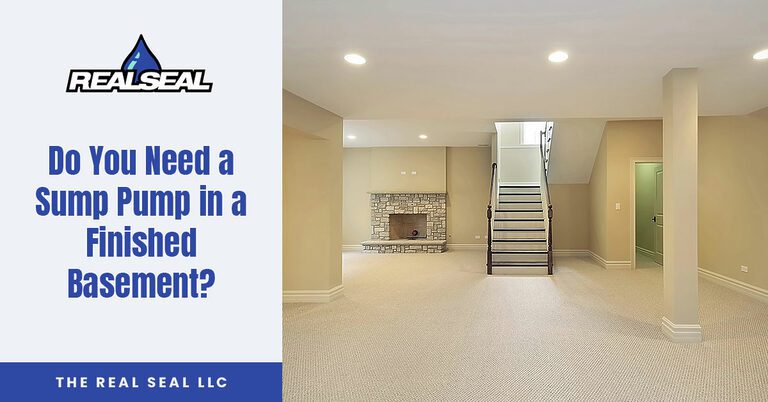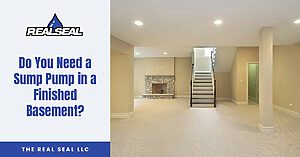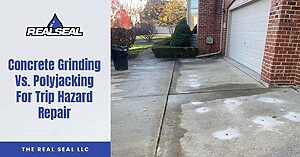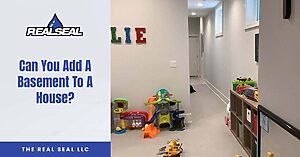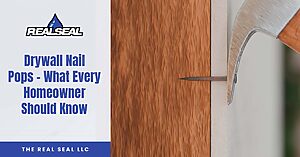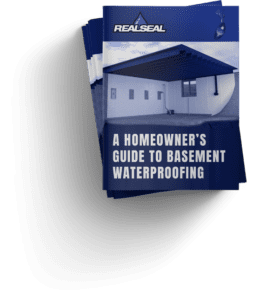A finished basement adds valuable living space to your home, offering a cozy retreat or an entertainment area. However, ensuring that this valuable space stays dry and protected from potential flooding is crucial. This is where a sump pump comes into play. But do you need a sump pump in a finished basement? Let’s explore the reasons and considerations to help you decide.
Understanding The Need For A Sump Pump
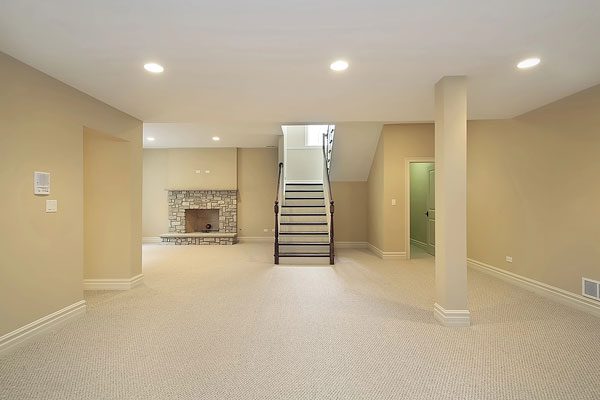
A sump pump is installed in the lowest part of your basement to help keep it dry and prevent flooding. Just imagine your basement floor. In one corner, a small pit or basin is dug into the floor, known as the sump basin, and is a collection point for excess water that finds its way into your basement. The soil around the foundation absorbs water during heavy rains, which can lead to increased hydrostatic pressure against the basement walls. This pressure can force water through cracks and porous surfaces, resulting in leaks and flooding.
When the water level in the sump basin rises to a certain point, it activates the sump pump. The sump pump then springs into action, sucking up the water from the basin and channeling it away from your home through a system of pipes. These pipes usually direct the water to a designated drainage area, like a storm drain, a dry well, or a section of your yard where it can safely disperse without causing any damage. This is particularly important if your basement is finished and you want to protect your investment from water damage.
Why A Sump Pump Is Essential For A Finished Basement
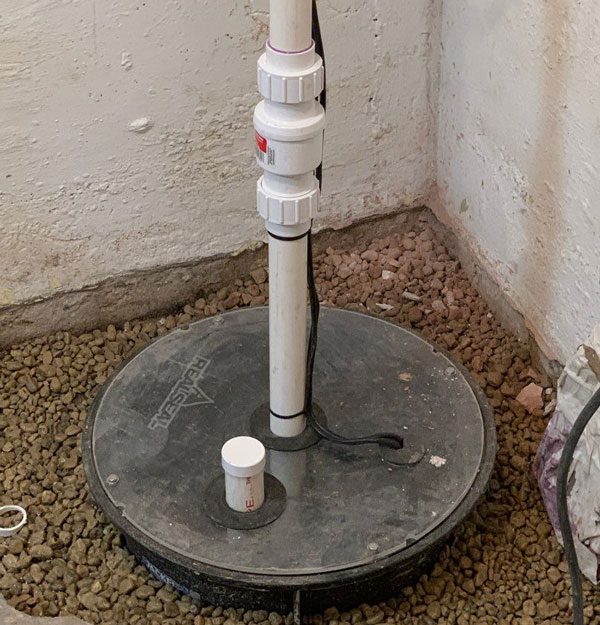
A finished basement is an investment in your home, turning what was once a dark and potentially damp space into a functional living area. You might have a cozy family room, a guest bedroom, a home gym, or even a home office down there. These spaces are filled with furniture, electronics, and personal items that can be costly to replace if damaged by water. Basements are naturally prone to water issues, and finished basements, with added features like drywall, flooring, and furniture, are susceptible.
Any water entering your basement can lead to consequential problems without a sump pump. Carpets can get soaked, drywall absorbs water and becomes moldy, and wooden furniture can warp and deteriorate. Beyond the apparent damage to your belongings, a damp basement creates the perfect environment for mold and mildew growth, which can pose serious health risks to you and your family. If you notice water pooling, dampness, or musty odors in your basement, it’s a sign that you may need a sump pump.
The Importance Of Keeping Your Basement Dry
Maintaining a dry basement is crucial for several reasons:
- Protecting Your Investment: You’ve spent time and money finishing your basement. A sump pump ensures that this space remains in good condition, preserving the value of your investment.
- Preventing Mold and Mildew: Dampness leads to mold and mildew, which damages your property and can also cause respiratory and other health problems.
- Safeguarding Your Belongings: A functioning sump pump keeps furniture, electronics, and personal items stored in your basement safe from water damage.
- Maintaining Structural Integrity: Persistent water issues can weaken your home’s foundation over time. A sump pump helps prevent this by keeping water away from the structure.
- Increased Property Value: A dry, well-maintained basement can enhance your home’s value, making it more attractive to potential buyers.
- Peace of Mind: Knowing you have a system to handle potential flooding allows you to enjoy your finished basement without worry.
Assessing Your Basement’s Flood Risk
Before deciding on a sump pump, assess your basement’s flood risk. Factors to consider include:
- Your area’s rainfall patterns
- The slope of your property
- The condition of your home’s foundation and drainage system
A sump pump is a wise investment if you live in an area with heavy rainfall or a high water table.
While some homeowners may consider installing a sump pump themselves, hiring a professional is often best. A professional installation ensures that the pump is correctly placed and connected to the drainage system, reducing the risk of malfunctions. Consulting with a professional can provide a thorough assessment and help determine the most suitable solution.
The cost of installing a sump pump can vary widely based on the type of pump, the complexity of the installation, and the contractor’s fees. While this may seem like a significant upfront expense, it pales in comparison to the potential costs of water damage repairs, mold remediation, and the loss of personal belongings.
Types Of Sump Pumps
There are two main types of sump pumps: submersible and pedestal.
- Submersible Sump Pumps: These are installed underwater in the sump basin. They are quiet, take up less space, and are more efficient, but they come at a higher cost.
- Pedestal Sump Pumps: These have the motor mounted above the sump basin, making them less expensive and easier to maintain. However, they are – noisier and take up more space.
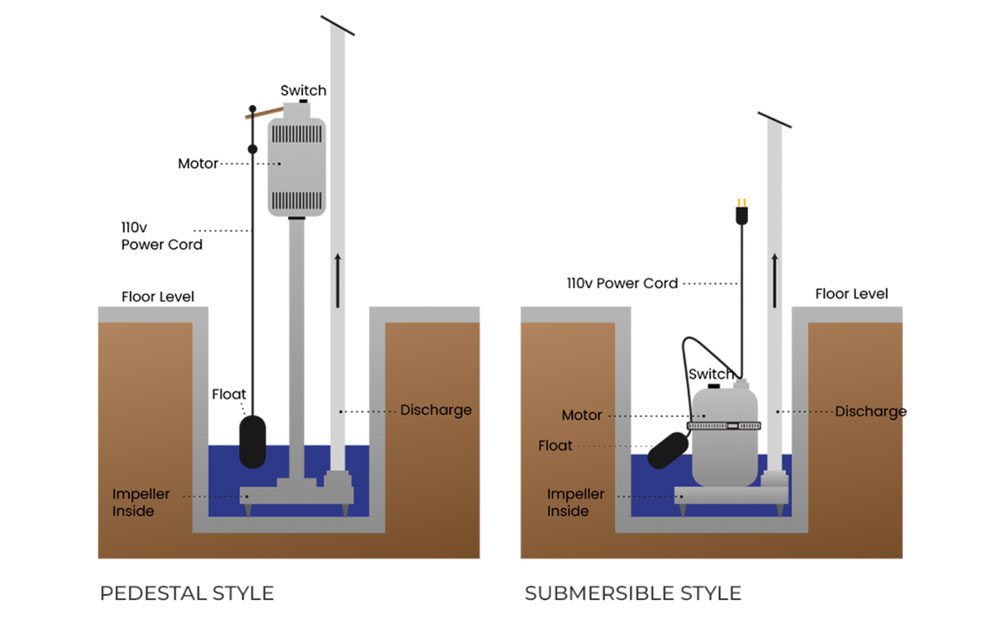
Installation Considerations
Installing a sump pump in a finished basement requires some planning:
- Location: Choose a spot where water naturally collects or is lowest in your basement.
- Power Source: Ensure you have a reliable power source, as sump pumps require electricity.
- Battery Backup System: Consider a battery backup system to keep your sump pump running during power outages, providing continuous protection against flooding. This is especially important in areas prone to severe weather, with frequent power interruptions.
Maintaining Your Sump Pump
Sump pumps require regular maintenance to ensure they function correctly. This includes routine inspections, periodically testing the pump by pouring water into the basin to see if it activates and cleaning the sump pit to remove debris. You should test your sump pump at least twice yearly, preferably before the rainy season and winter. Regular testing ensures the pump is in good working condition and can handle water accumulation.
The average lifespan of a sump pump is about seven to ten years. However, this can vary based on the frequency of use, maintenance practices, and the quality of the pump. Regular maintenance can help extend the pump’s lifespan.
Installing a battery backup system is also recommended to keep the pump operational during power outages, common during severe weather conditions when flooding is most likely to occur.
Alternatives To Sump Pumps
While a sump pump is highly effective, it’s not the only solution for basement waterproofing. Other methods include:
- Improving Drainage: Ensure your gutters are cleaned regularly, downspouts deposit runoff at least 15 feet from your home, and the ground around your home slopes away from the foundation. Directing water away from your home’s foundation can help reduce water pooling near the basement walls.
- Waterproofing: Applying waterproof sealants to basement walls and floors can help prevent water seepage.
- French Drains: These are trenches filled with gravel and a perforated pipe that redirects water away from the foundation.
Do You Need A Sump Pump In A Finished Basement?
A finished basement adds significant value and utility to a home, but it also comes with the responsibility of protecting it from water damage. If your finished basement is prone to water issues, installing a sump pump safeguards your investment, ensuring a dry, healthy, and functional space. It offers protection against water damage and provides peace of mind. By understanding the role of sump pumps, their benefits, and the steps involved in their maintenance, you can weigh your options.
If you live in the Chicagoland area and have questions about sump pumps, whether you need clarification on the installation process, or how a sump pump can benefit your home, you can rely on The Real Seal for expert advice. Our team is ready to provide comprehensive answers to all your inquiries. We understand that making decisions about your home’s safety and maintenance can be overwhelming, especially involving technical equipment like a sump pump.
The Real Seal specializes in helping you understand your options and ensuring you make informed choices. Not only will we address all your questions in detail, but we also offer free estimates. This way, you can understand the costs and feel confident you’re getting the best service possible. We aim to ensure that your sump pump is installed correctly and efficiently, providing long-term protection and peace of mind for your basement. Contact us today to schedule a consultation and take the first step toward a dry, safe, and worry-free basement.
